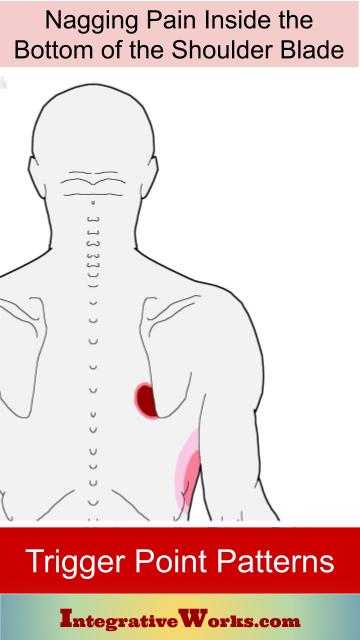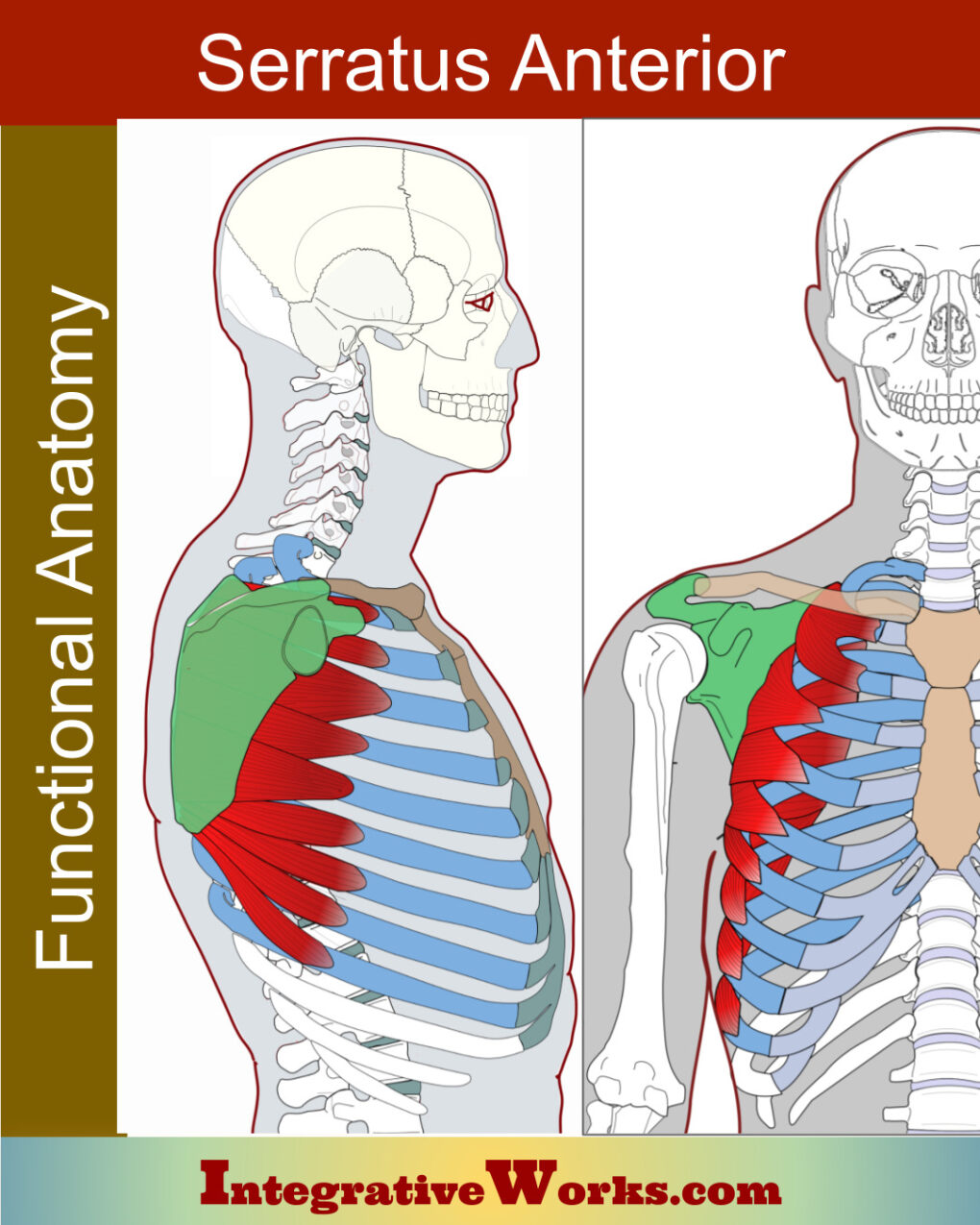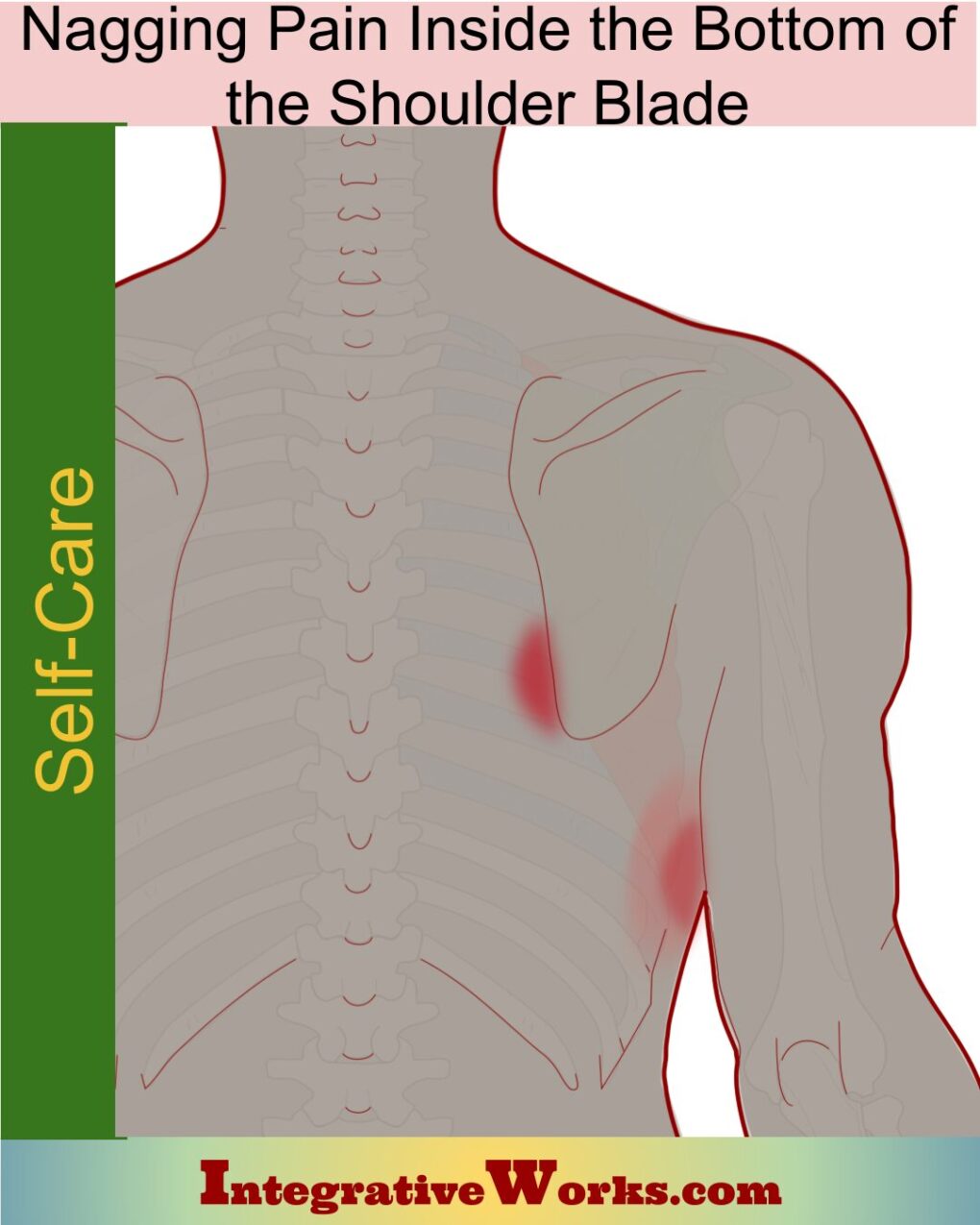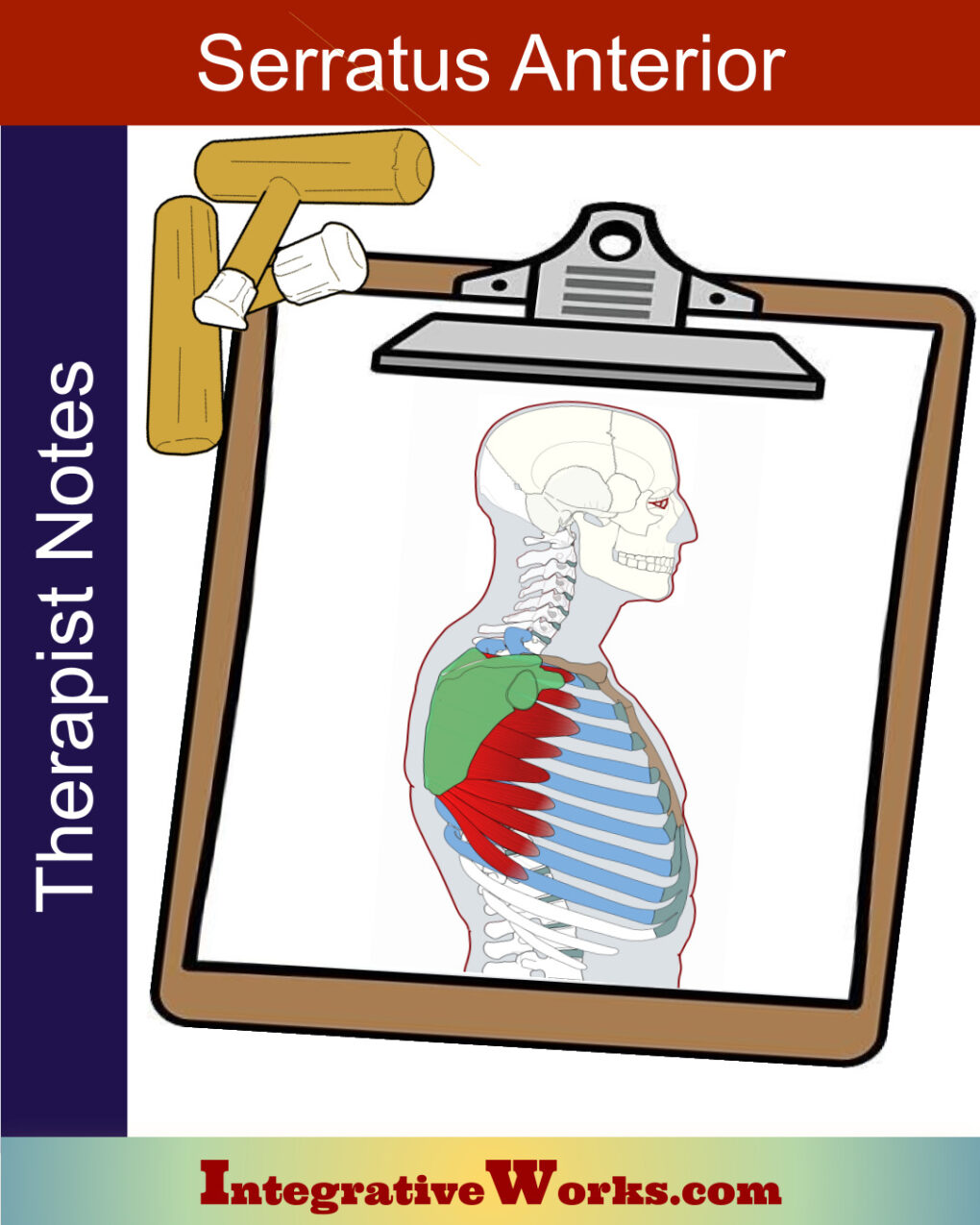Table of Contents
- How People Describe This Pain Pattern
- How You Activate and Intensify This Pain Pattern
- Self-Care – Getting Relief on Your Own
- Musculoskeletal Anatomy Behind Your Pain
- Therapy Notes for Massage and Bodywork
Want to skip ahead?
Here’s a link to my post about
getting relief on your own.
How People Describe This Pain Pattern
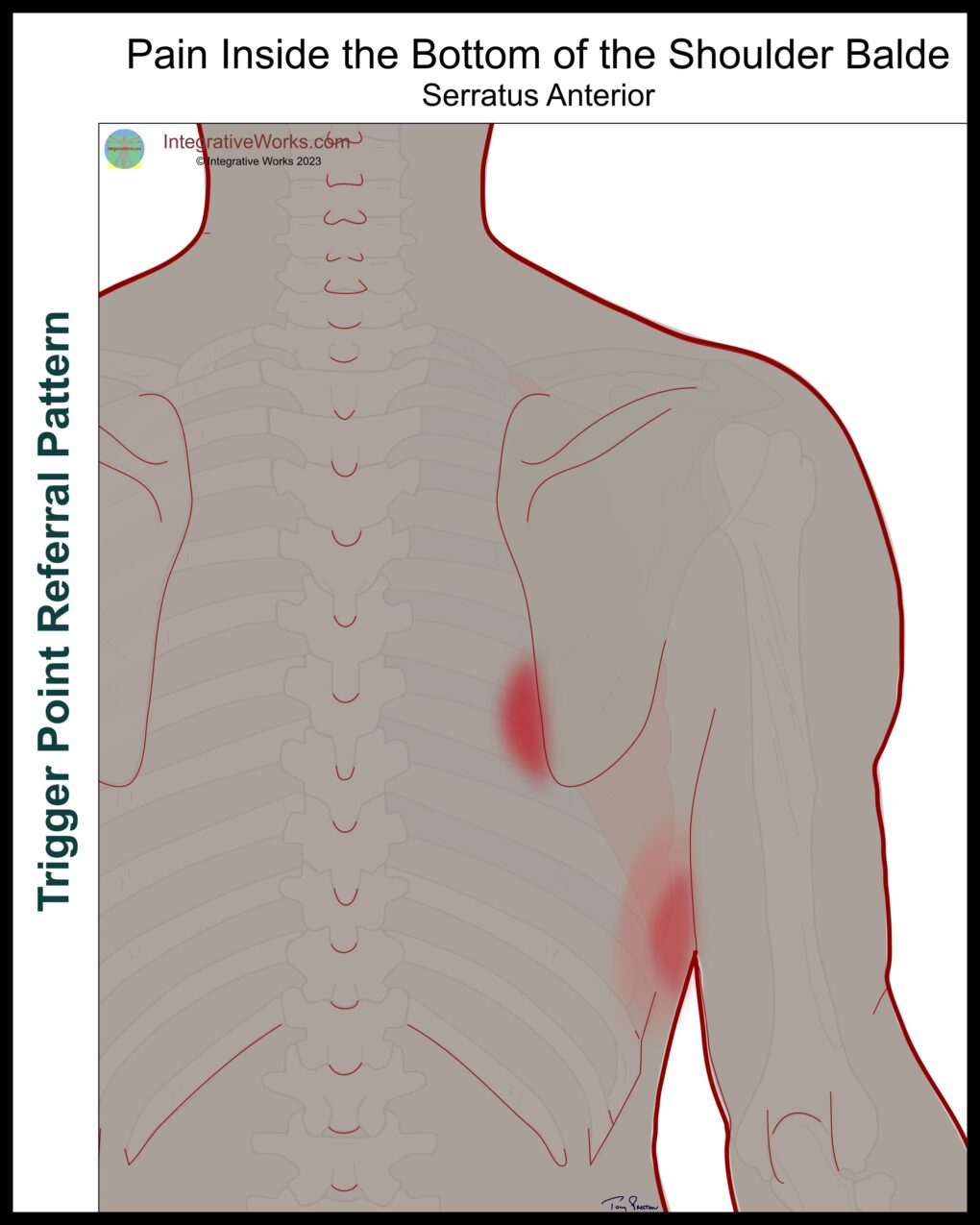
People complain of nagging pain in the upper or mid-back, just inside the bottom of the shoulder blade. They have trouble determining what causes it or what to do for relief. The people may also complain of sore ribs on that side, just under the armpit, or fibrocystic breasts. Typically, they have a straighter upper back with shoulder blades that wing out instead of lying flatly against the back.
Sometimes, this nagging pain inside the shoulder blade bothers people while they are walking or running. That pattern is more common in people who have a rounded upper back. Also, those people are prone to getting a stitch in their side when running or walking.
Often, they have tried many things to get relief from this nagging pain. However, they have not figured out how to get relief because the trigger point is not near the site of pain. Additionally, the trigger point is in a seldom-addressed muscle.
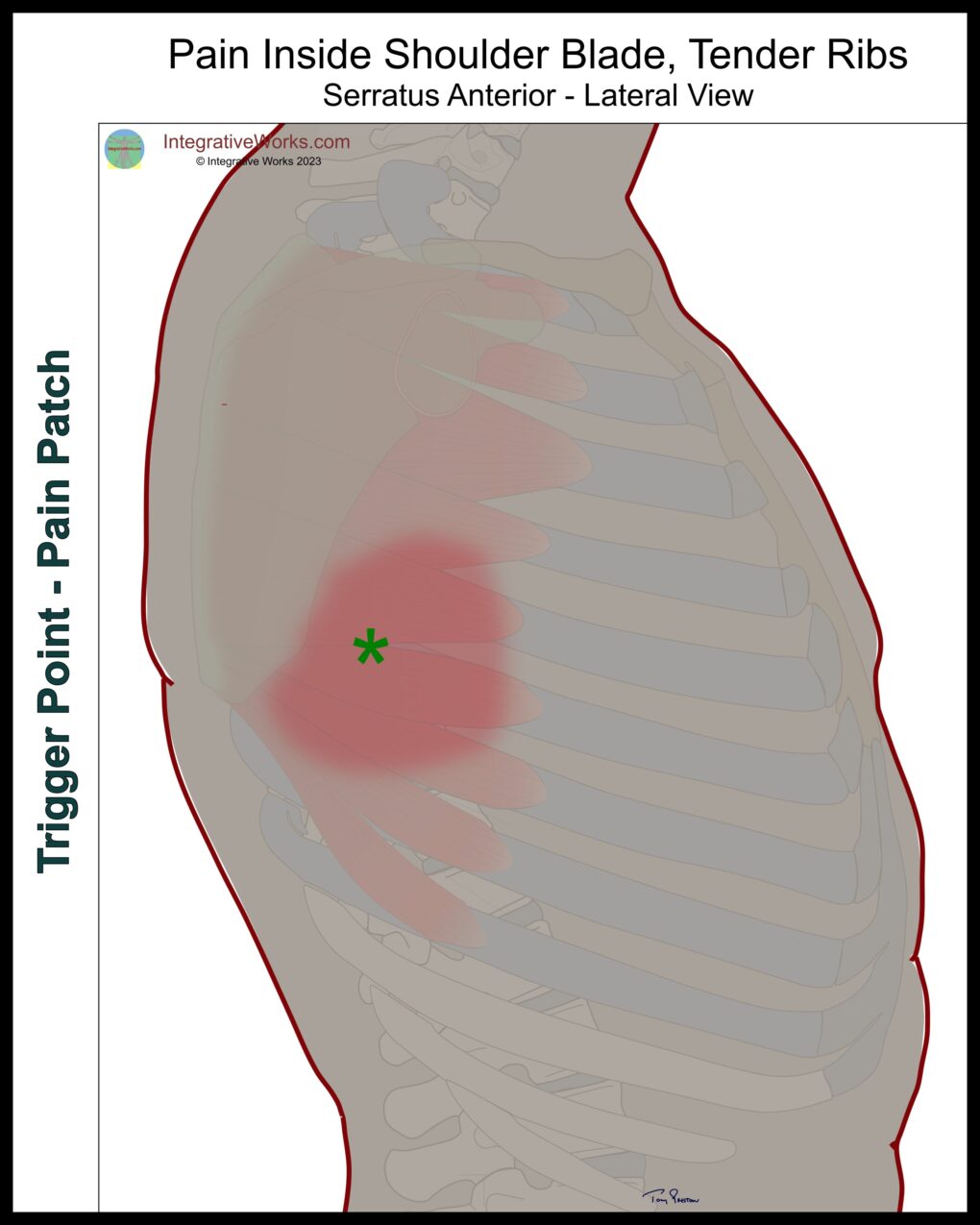
Tender Ribs & Breast Sensitivity
The same trigger point can create tenderness to the touch along the ribs.
Additionally, this trigger point can make breasts unusually sensitive. In my first few years of practice, I had cases where irritation of the breast and nipple reduced dramatically from releasing trigger points in the serratus anterior. People were surprised and sent their friends. Even guys who were sensitive to shirts that rubbed their nipples were surprised at the results.
See your Doctor
If you have breast sensitivity, see your doctor before trying to relieve it with trigger point therapy. It may be more serious.
How You Activate and Intensify This Pain Pattern

This problem is ordinarily caused by forceful or prolonged shoulder blade retraction. The most common cause is resting on the elbows while working on a laptop, especially when bent forward or lying on the floor.
Great Examples in This Pic
The gal on the right sits up straight, which is excellent. But look at how her shoulders are high from habitually leaning on her elbows. The guy in the middle is similar but not even trying to sit up straight. On the left, the guy is in the posture that creates this problem. See how he stretches the muscle by leaning on his elbows and dropping his ribs forward. This really aggravates this nagging pain inside the shoulder blade. The gal by the window does a great job of dropping her shoulders and elbows.
Push-ups and Planks
People also get this pattern from a new routine of push-ups or planks during exercise. One client said this started after more vigorous tennis. Another client fell while mountain biking. When she landed, it pushed her shoulder back and strained this muscle.
Back Hack. Cough, Cough.
This problem may follow an illness that involves chronic or prolonged coughing. If you have this or other coughing pain, look at this other post. It has simple strategies for relief from different areas of pain that come from chronic coughing.
This muscle helps expand the chest during labored breathing and may be present during vigorous exercise. It is the same muscle that crates that stitch in your side while running.
The Musculoskeletal Anatomy Behind Your Pain
Musculoskeletal Anatomy
This post on anatomy contains standard information about the origin, insertion, function, and innervation of muscles. Additionally, it includes information on functional considerations and anomalies.
Find Related Posts
Anatomy posts have a grid of all related posts. This includes posts on pain patterns, self-care, therapy notes, NMT protocols, cranial techniques, and cases.
Getting Relief on Your Own
Clinically Proven
Self-Care Strategies
Self-Care Posts have common sections to make them easy to follow and understand:
- Activities to Avoid or Change
- Strategies for Quick Relief
- Stretches and Exercise for Longer-Lasting Relief
- Yoga Corner
Therapy Notes for Massage and Bodywork
Better Bodywork
Through Shared Expertise
Therapy Notes provide details for cranial, spinal, and local joint work. These notes also link to a traditional neuromuscular protocol.
By treating integrative components first, direct work on the muscle becomes less intense while providing longer-lasting relief.
Support Integrative Works to
stay independent
and produce great content.
You can subscribe to our community on Patreon. You will get links to free content and access to exclusive content not seen on this site. In addition, we will be posting anatomy illustrations, treatment notes, and sections from our manuals not found on this site. Thank you so much for being so supportive.
Cranio Cradle Cup
This mug has classic, colorful illustrations of the craniosacral system and vault hold #3. It makes a great gift and conversation piece.
Tony Preston has a practice in Atlanta, Georgia, where he sees clients. He has written materials and instructed classes since the mid-90s. This includes anatomy, trigger points, cranial, and neuromuscular.
Question? Comment? Typo?
integrativeworks@gmail.com
Interested in a session with Tony?
Call 404-226-1363
Follow us on Instagram

*This site is undergoing significant changes. We are reformatting and expanding the posts to make them easier to read. The result will also be more accessible and include more patterns with better self-care. Meanwhile, there may be formatting, content presentation, and readability inconsistencies. Until we get older posts updated, please excuse our mess.
